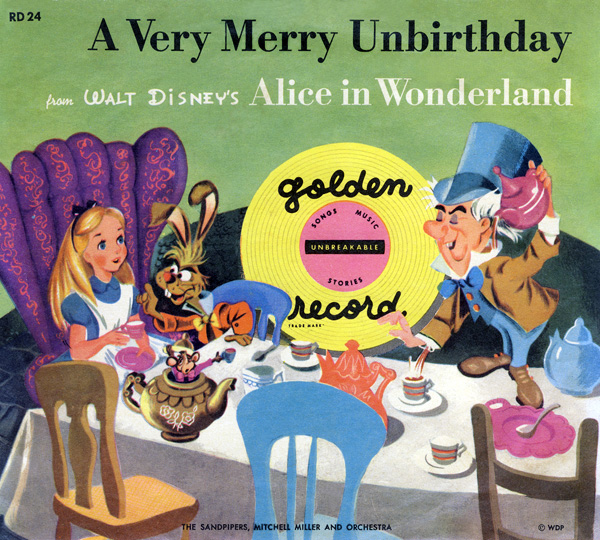RPM
Birthdays
and Unbirthdays


Phonographians
find many days and many ways to Celebrate the Phonograph!
 Phonograph records have revolved at many
speeds, most of which have come and gone.
Phonograph records have revolved at many
speeds, most of which have come and gone.
Record speeds are, however,
one way to remember the Phonograph.
There are currently
seven Friends of the Phonograph "RPM
Birthdays".
These RMP
birthdays are an opportunity to "tip your cap" to the history
of phonograph RPMs and doing so as part of a Friend of the Phonograph's
birthday celebration.
These "tip
of the hat" RPM birthdays are based on the phonograph record
speeds of "8 1/3"
, 16 2/3" , "33
1/3" , "45" , "78"
, "80" , "90"
(1)
If you
are a Phonographian
and your birthday age is one of those RPM speeds you should give the
phonograph a tip of the hat as part of your RPM birthday celebration.





Obviously invented by a
Phonographian, an RPM birthday is an addendum to a birthday. As such,
it's an opportunity for Phonographian's to mention the phonograph
and explain phonograph RPMs to all in attendance (something that only
a guest, celebrating your birthday, would probably listen to with
a smile).
If
it isn't an RPM Phonographia Birthday or Phonographia
Red-Letter Day, it can still be celebrated!
Friends
of the Phonograph look for any excuse to
celebrate connections with the Phonograph.
Lacking
an RPM Birthday, a Phonographia Red-Letter Day, or a Friend of the
Phonograph's Birthday there are many other Phonographia On This
Day events that can be celebrated.
Check the
Phonographia On
this Day Calendar for what happened today related to the phonograph's
history.
Nothing on any calendar?
Then simply remember that a Phonograph's Unbirthday
can always be celebrated.

1951
Walt Disney record that can be used to celebrate un-Phonographia birthdays.

"The Mad Tea Party"
(Courtesy of Emily Winfield Martin)

"Tea for Two"
at 2:22 02-22-2022


Phonograph ties for an
Unbirthday, June 2005



Friends
of the Phonograph Birthday Song
Phonograph
History Remembered

The
"On This Day" PhonoCalendar
(1) - The
celebration of the phonograph's RPMs - Although early disc and cylinder
recordings were produced in a variety of speeds ranging from 60 to
160 RPM, FOTP Red Letter RPM Birthdays are currently the following:
8 1/3 RPM
(used by the National
Library Services starting in "1969 to record magzines
and the recording of all disc talking books at 8-1/3 rpm began
in January 1973. Use of these slow recording speeds made it possible
to include almost twice as much material as on a disc of corresponding
size recorded at 16-2/3 rpm.
16 2/3 RPM
(first used in early 1930's and subsequently used for 1) spoken
word recordings, 2) car music systems like Chrysler's Hi-Way Hi-Fi
2 of the 1950's 3) background music systems for restaurants and
businesses 4) limited music formats - see Canada Antique Phonograph
Society (CAPS) May 2010 article by Mike Dicecco for history of
16 2/3 format);
33
1/3 RPM (first used by Vitaphone in 1930 for electrical transcription
recordings and introduced in 1948 by Columbia Records as the Long-Playing
Record (LP));
45
RPM (introduced by RCA in 1949); For a brief history of the
45 rpm go to Historys
Dumpster
78
RPM (the standard for early disc records from 1890s into the
1950's);
80
RPM (for Edison Diamond Disc records),
90
RPM (for Pathé disc records with vertically cut grooves requiring
a special sapphire ball-shaped stylus).

The Big Four (Record
Speed Selector - turn the knob to select turntable speed)

Record Protection for the
Future: "Any record speed from 10 to 85, including the coming
16 R.P.M.!" Zenith, 1951